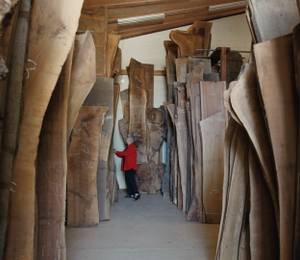Toronto, Ontario, Canada – The Royal Architectural Institute of Canada (RAIC) has announced Tokyo-based Tezuka Architects’ Fuji Kindergarten as the winner of the 2017 Moriyama RAIC International Prize. The Prize winner was revealed on September 19, 2017, during an awards ceremony and gala at the historic Carlu in Toronto, attended by about 250 members of the Canadian and international architecture community.
“I feel now there is someone who understands this project well. I think it's quite a unique prize because it's about contributing to society,” commented the 2017 Moriyama RAIC International Prize winner, Takaharu Tezuka of Tezuka Architects. “It looks like a simple structure. But it’s a layering of many ideas combined.”
Tezuka Architects’ Fuji Kindergarten in Tokyo, Japan, was selected by the seven-member jury following site visits to each of the four shortlisted projects. In addition to the Fuji Kindergarten, the finalists include 8 House in Copenhagen, Denmark, by Bjarke Ingels Group; the Melbourne School of Design in Melbourne, Australia, by John Wardle Architects and NADAAA; and the Shobac Campus in Nova Scotia, Canada, by MacKay-Lyons Sweetapple Architects. The Prize received submissions from 17 countries across six continents.
“It is a pleasure to congratulate the winner of the second Moriyama RAIC International Prize and to recognise their devotion to architecture that imagines new possibilities for people,” said Raymond Moriyama, CC, O.Ont., FRAIC.
Located in Tokyo, Japan, since 2007, the Fuji Kindergarten is a one-storey, oval-shaped kindergarten that can accommodate over 600 children running freely around its open-air roof. The building is designed to support the Montessori education method, which encourages independence, and for a climate that allows the children to be outdoors much of the year. The elliptical building, which houses classrooms, offices, and support spaces, surrounds an open playground that serves as the visual, functional, and spiritual focus of the school. The place for play is augmented by an elliptical upper deck that overlooks the playground and forms the roof of the school building. The rooftop itself becomes the play equipment for the children, some of whom run up to six kilometres a day.












